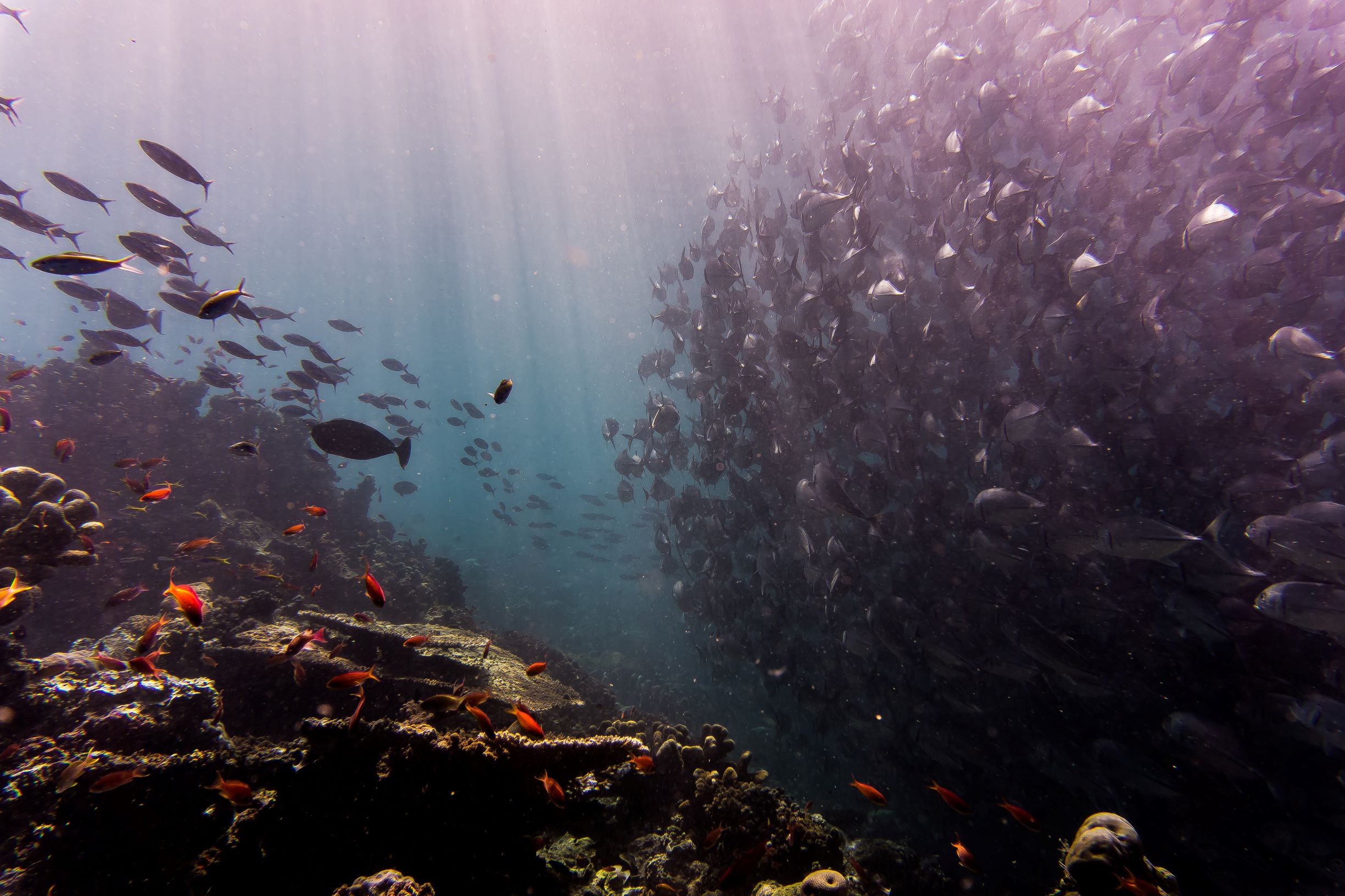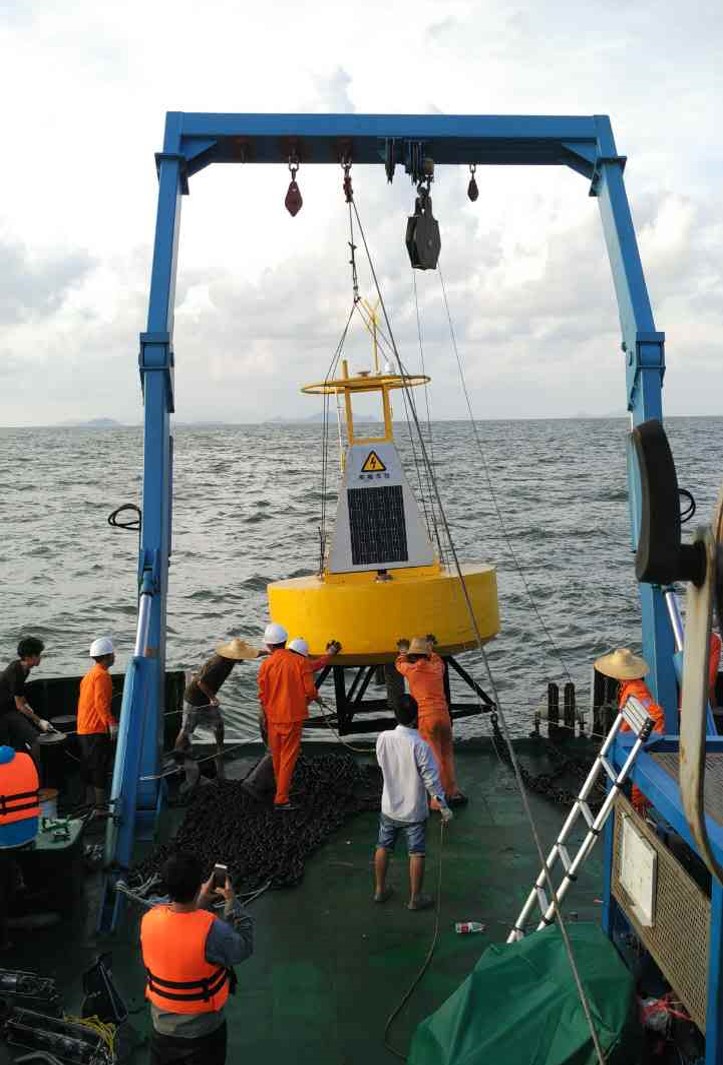Addressing Pollution and Climate Change in Hong Kong's Marine Ecosystem and South China Waters through Ocean Modeling


Summary of Impact
Understanding the circulation, transport and underlying dynamics of our oceans has become critically important, in the context of increasing pollution, urban coastal development, rising sea levels, and climate change. Prof Jianping Gan has led research to address this through pioneering ocean monitoring and assessment, and a new mathematical ocean modeling system. This led in 2017 to the OCEAN_HK project now enabling Hong Kong and Mainland China governments and the general public to better understand and respond to the causes and future trends of pollution-associated and increasing hypoxia and eutrophication in Hong Kong and south China coastal waters; and the dynamics behind storm surges that compounded the destruction of recent tropical cyclones. Meanwhile, the team’s data is being used by the Hong Kong Observatory for the development of its marine meteorological forecasting service, and the modeling as a case study for Science, Technology, Engineering and Mathematics (STEM) education in secondary schools.
Underpinning Research
Oceanographer and mathematician Professor Jianping Gan (joined HKUST in 2003, now Chair Professor, Department of Mathematics, Department of Ocean Science, Division of Environment & Sustainability, Director of the Ocean Dynamics and Modeling Program) has brought mathematics to the fore of oceanography, as one of the region’s leading scientists in numerical ocean modeling and ocean circulation dynamics. In the past 15 years, he has driven the development of interdisciplinary oceanographic research in Hong Kong, through his studies of ocean circulation, coupled marine ecosystem dynamics, and advanced numerical ocean modeling. His novel research is important for understanding and addressing critical challenges facing coastal environments, in particular the impacts of organic pollution, and consequences of extreme weather and climate change.
As a result of analyses of observational evidence from numerous sea-going research ventures and computer simulation of ecosystem characteristics in the northeastern South China Sea, Gan identified ecosystem dynamics that are jointly controlled by physical and biological forcing and result in significant biomass along the ocean shelf area [R1, R2]. He, together with four other scientists, was awarded the State Natural Science Award (Second Class) in 2014, the most prestigious science award scheme in China, for his innovative ocean circulation in the South China Sea. He also attracted global attention after identifying the three-layer alternating spinning circulation of the South China Sea, which showed for the first time that its waters circulated anti-clockwise at surface level, clockwise at mid-level, and anti-clockwise at its deepest layers [R3]. This provided an important hydrodynamic framework for understanding heat and energy transport, the carbon cycle, ecosystems, and climate variability in the region.
Meanwhile, in limited area ocean models, existing open boundary conditions (OBCs) often create dynamic inconsistencies and perform poorly in resolving tidal or subtidal flow when both forces exist. Gan’s group filled the gap in the regional modeling by developing a novel tidal-subtidal (TST) OBC model to accommodate the concurrent TST forcing at the open boundary [R4]. Gan went on to use this understanding of ocean circulation to inform the on-going HK$40 million Ocean Circulation, Ecosystem and HypoxiA arouNd Hong Kong Waters (OCEAN-HK) project, launched in January 2017. The five-year project is led by Gan from HKUST, with partners from other Hong Kong, Mainland China and US universities and key Hong Kong and mainland governmental agencies. (Other HKUST members comprise Prof Hongbin Liu, a specialist in microbial dynamics in aquatic ecosystems, and Prof Stanley Lau, an expert in marine pollution monitoring.) Besides field monitoring and lab studies, the project has used Gan’s novel numerical methodologies and physical theory to identify the hypoxia hotspots in the region, their remote and local sources, and the hydrodynamic factors transporting and dispersing biogeochemical substances associated with increasing eutrophication and hypoxia [R5, R6]. Together, the team has built the first ocean monitoring-diagnosis-prognosis system in the region, for a science-based approach to marine environment management.
Details of the Impact
Gan’s research and the databank generated have achieved significant impact on public policy and public debate for the management of oceans and coastal land – including i) debate surrounding major development plans in Hong Kong for sewage treatment and reclamation, and ii) actions needed to mitigate against storm surges triggered by extreme weather and climate change. It is also having impact on the environment, by informing policymakers for understanding and mitigating against marine eutrophication and hypoxia; impact on public services, namely through the provision of a data resource to improve meteorological services, which has important implications for the economy and benefits for the wider public; and impact on education by being used as a case study for Science, Technology, Engineering and Mathematics (STEM) education, helping the Hong Kong government achieve its aim of developing STEM education and enriching teachers’ knowledge.
Informing public policy and debate on marine and coastal management: As the OCEAN-HK website explains, the project contributes new understanding, identification, and potential mitigation of hypoxia and eutrophication in the context of wider ocean biophysical dynamics. Among the tools made available to government agencies are a comprehensive marine environment databank, of data collected from its pioneering mapping and time-series buoy monitoring; laboratory experiments; and numerical simulations of the hydrography properties, eutrophication, and hypoxia in the Pearl River Estuary, adjacent continental shelf, and Hong Kong waters. It addresses the limitations of existing monitoring data collected by government and based on snapshots of water quality, without the hydrodynamic measurements and continuous time-series monitoring necessary to capture highly variable biophysical variations in the region. Reflecting impact on public policy, the data and findings are shared with three government departments: Environmental Protection Department (EPD); Hong Kong Observatory (HKO); and Agriculture, Fisheries and Conservation Department (AFCD). Reach is extended by including the key advisory China Council for International Cooperation on Environment and Development (CCICED) in its knowledge exchange. The China Council is chaired by a member of China’s State Council and serves as a high-level international advisory body on sustainable development.
As well as having access to the databank and live simulations, these departments and CCICED have participated in annual symposia since 2017, with the January 2019 event also attended by representatives from the UN, Norway, and Mauritius. Through this science-policy engagement, Gan’s project is informing overall management and sustainability strategies for the ocean environment in the new Guangdong-Hong Kong-Macao Greater Bay Area Initiative. The Greater Bay Area, as it is known, is the most highly populated bay area in the world, being home to over 70 million people, with GDP totaling around US$1.6 trillion in 2019, according to the Hong Kong government.
Within Hong Kong, the team has shared important knowledge for sewage treatment planning – namely the extent that the Harbour Area Treatment Scheme (HATS) Stage 1 (completed in 2001) and 2A (completed 2015) have been able to address the eutrophication and hypoxia problem, and the efficacy of the planned multi-billion-dollar HATS Stage 2B expansion. This information may assist the Hong Kong government in deciding whether or not HATS (Stage 2B) should proceed.
A letter for the Director of Hong Kong Environmental Protection Department affirmed the government’s support for and use of the OCEAN-HK project. “The mapping, time-series buoy monitoring and ocean coupled circulation-ecosystem modelling system … are expected to be a valuable platform for promoting in-depth understanding of pollution load and its consequences regarding the environment capacity of our marine waters and the ecosystem.” The EPD would “share the outcome and scientific knowledge generated from this useful research.”
Impact on public service - marine meteorology and extreme weather planning: Gan’s research is also having an immediate impact on public services, for the Hong Kong Observatory (HKO). A letter for the Director of the Hong Kong Observatory affirmed the HKO “has requested access to the field and modelling data generated by OCEAN-HK Project in connection with the development of an operational marine forecasting system for the provision of marine meteorological services … the availability of the much-needed additional data on the server will help us better calibrate and validate the operational forecasting system under development at HKO.” Continued co-operation benefits HKO’s “ongoing research and development work”.
Indeed, Gan, who is a scientific advisor to the HKO, shared his ocean modeling and recommendations for more accurate storm surge forecasting during a research forum hosted in May 2019 by the HKO on the impact of Super Typhoon Mangkhut, which brought destructive, record-breaking storm surges and the strongest winds for three decades to Hong Kong in August 2018. Participants included senior representatives from HKO, Drainage Services Department, Civil Engineering and Development Department, Airport Authority, Transport Department, Mass Transit Railway, CLP Power, and five other academic experts. The HKO describes the forum as having “provided a platform for participants to discuss research needs to cope with similar challenges in the future and to foster collaboration among stakeholders in different sectors for the betterment of the society”. Gan’s presentation has been circulated by HKO.
Informing public debate on climate change and Lantau Island reclamation: Gan’s research has had impact on policy debate and public understanding, by being cited on two issues of public concern: climate change and government plans to reclaim 1,700 hectares of land south of Lantau Island, for housing for around 270,000 people. For example, on climate change, he was quoted by the China Daily in 2014 on the risks of sudden flooding. In 2018, the South China Morning Post quoted him on the “dead zones” around Lantau Island, where oxygen around the sea floor had dipped to two milligrams per liter, and on residents’ reasons to be concerned about the impact on the marine environment from the planned Lantau reclamation, and the need for this to be scientifically investigated.
Impact on education: Gan’s research has had impact on teachers’ knowledge, after being identified by the Education Bureau (EDB) of the HKSAR as a suitable topic for teaching STEM education, a policy priority for curriculum development in Hong Kong. He was invited to share his research with mathematics teachers, as part of the EDB’s Mathematics and STEM Seminar Series, aimed at helping participating teachers in the application of mathematics for daily life issues.
References to the Research
[R1] Gan, J., Z. Lu, M. Dai, A. Cheung et al., 2010. Biological response to intensified upwelling and to a river plume in the northeastern South China Sea: A modeling study, J. Geophys. Res.-Oceans, 115, C09001.
[R2] Gan, J., H. Ho, L. Liang, 2013. Dynamics of intensified downwelling circulation over a widened
shelf in the northeastern South China Sea. J. Phys. Oceanogr., v. 43, No. 1, 80-94.
[R3] Gan, J., Z. Liu and C. Hui, 2016. A three-layer alternating spinning circulation in the South China Sea, J. Phys. Oceanogr.
[R4] Liu Z, Gan J, 2016. Open boundary conditions for tidally and subtidally forced circulation in a limited-area coastal model using the Regional Ocean Modeling System (ROMS), J. Geophys. Res (Oceans), 121 (8), 6184-6203.
[R5] Lu, Z, Gan J, Dai M, Liu H, Zhao X, 2018. Joint effects of extrinsic biophysical fluxes and intrinsic hydrodynamics on the formation of hypoxia west off the Pearl River Estuary. J. Geophys. Res. (Oceans).
[R6] Liu, Z, Gan J, Wu X, 2018. Coupled summer circulation and dynamics between a bay and the adjacent shelf around Hong Kong: observational and modeling studies. J. Geophys. Res. (Oceans).
Funding
The OCEAN-HK project received HK$40 million funding under the Hong Kong Research Council’s Theme-based Research Scheme in 2016/17 (Sixth Round).